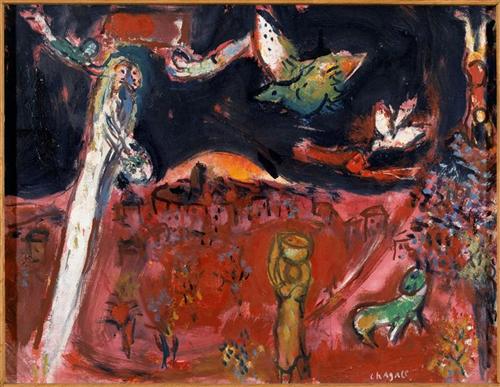"The Virtue of Faith," Piero del Pollaiolo 1469-70 AD
According to the Modern Catholic Dictionary compiled by our patron, Fr. John Hardon, SJ, the virtue of faith is:
"[t]he infused theological virtue whereby a person is enabled to “believe that what God has revealed is true – not because its intrinsic truth is seen with the rational light of reason – but because of the authority of God who reveals it, of God who can neither deceive nor be deceived.”'
"Correct me if I'm wrong, but doesn't this mean that the virtue of faith is opposed to reason?"
I'm going to go ahead and correct you, since you're wrong. As St. Alphonsus Liguori notes, "[t]he mysteries of holy faith are not in opposition to reason, but they transcend its power of comprehension.. . . . "Faith," say St. Augustine, "is characteristic not of the proud but of the humble."
"So, it sounds like all you have to do is believe what God has revealed, and then you're done. At least I'm right about that, right?"
No again, since as St. Alphonsus Liguori also notes, "[t]o be pleasing and acceptable in the sight of God, it is not enough merely to believe all that our holy faith teaches us; we must, moreover, regulate our life in accordance with our belief. Pico of Mirandola says: It is certainly great folly not to wish to believe the Gospel of Christ; but it would be greater folly still to believe it and to live as if you did not believe it."
"Okay, but a life in harmony with the precepts of our holy faith doesn't sound fun. Is it?"
Yes, it is. In fact, it's much, much better than fun, as St. Alphonsus Liguori writes:
"Ask those who lead a life of faith if the renunciation of this word's goods makes them sad! Visit the holy Anchorite Paul in his grotto, St. Francis of Assisi on Mount Alverno, St. Mary Magdalen de Pazzi in her convent and ask them if they miss the joys and pleasures of this earth! They will answer without hesitation: No, no; we desire but God alone and nothing else."
"[t]he infused theological virtue whereby a person is enabled to “believe that what God has revealed is true – not because its intrinsic truth is seen with the rational light of reason – but because of the authority of God who reveals it, of God who can neither deceive nor be deceived.”'
"Correct me if I'm wrong, but doesn't this mean that the virtue of faith is opposed to reason?"
I'm going to go ahead and correct you, since you're wrong. As St. Alphonsus Liguori notes, "[t]he mysteries of holy faith are not in opposition to reason, but they transcend its power of comprehension.. . . . "Faith," say St. Augustine, "is characteristic not of the proud but of the humble."
"So, it sounds like all you have to do is believe what God has revealed, and then you're done. At least I'm right about that, right?"
No again, since as St. Alphonsus Liguori also notes, "[t]o be pleasing and acceptable in the sight of God, it is not enough merely to believe all that our holy faith teaches us; we must, moreover, regulate our life in accordance with our belief. Pico of Mirandola says: It is certainly great folly not to wish to believe the Gospel of Christ; but it would be greater folly still to believe it and to live as if you did not believe it."
"Okay, but a life in harmony with the precepts of our holy faith doesn't sound fun. Is it?"
Yes, it is. In fact, it's much, much better than fun, as St. Alphonsus Liguori writes:
"Ask those who lead a life of faith if the renunciation of this word's goods makes them sad! Visit the holy Anchorite Paul in his grotto, St. Francis of Assisi on Mount Alverno, St. Mary Magdalen de Pazzi in her convent and ask them if they miss the joys and pleasures of this earth! They will answer without hesitation: No, no; we desire but God alone and nothing else."





 .
. 
